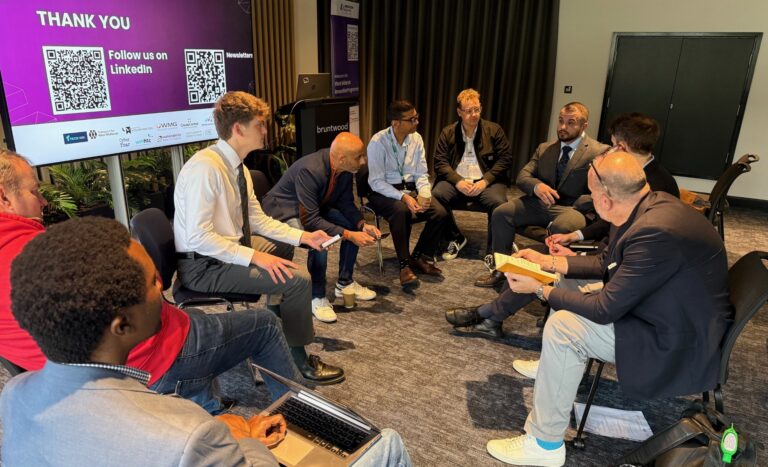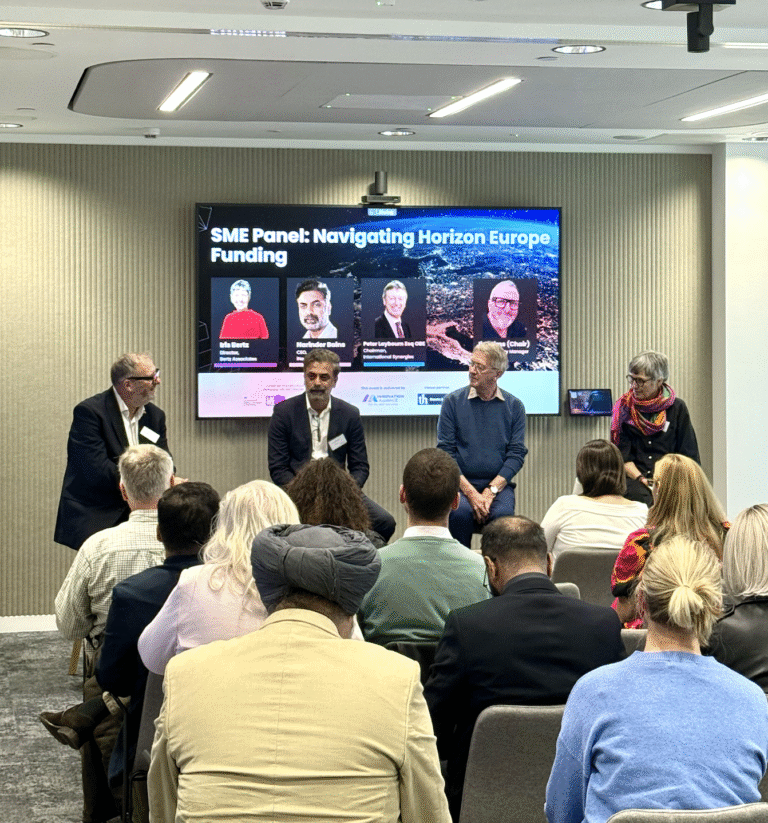This year has seen a great deal of policy and strategy change and development around recovery, growth, levelling up and regional responsibilities – much of it still in flux. But a common thread is the central place of innovation in the UK and regional economies, with the one White Paper that was published in the summer being the UK Innovation Strategy.
At our Innovation Policy and Practice event on 16th September, almost 80 participants, from a mix of private, public, university and third sector, had a chance to discuss how the West Midlands may develop its own strategic approach to innovation in the context of the national strategy.
Shahid Omer, BEIS
The discussions opened with Shahid Omer, Deputy Director for Innovation at the Department for Business, Energy and Industrial Strategy (BEIS) giving an overview of the National Innovation Strategy and its four pillars:
Jonathan Skinner, WMCA
An introduction to the West Midlands’ regional response was provided by Jonathan Skinner, Head of Economy and Local Industrial Strategy, WMCA.
His aim was for a response that was both practical, responding to particular regional successes and needs, and strategic, working collaboratively with government. Jonathan was keen to gain the views of stakeholders so had four questions, which were then discussed by participants, as below.
What factors influence businesses to invest in innovation?
Businesses will only innovate if they anticipate benefit sufficient to outweigh risk – commercial benefit or contribution to other goals in case of third sector business. Factors influencing business innovation are wide ranging, with support required to encourage innovation varying accordingly, but can be divided into ‘external’ and ‘internal’ as follows.
External stimuli for innovation include:
- Business/ organisational survival
- Any kind of crisis (local to global)
- Customer demand
- Supply chain issues
- Regulatory demand.
Internal factors include:
- The growth or innovation mindset of the businesses
- Sense of confidence at the time to take the risk of innovating
- Where these conditions exist, businesses may respond to any of the external stimuli, but may also seek out disruptive ideas, gaps in the market (including for export), new challenges to tackle or new collaborative/ cross-sector opportunities.
Which national or regional programmes stand out as supporting the adoption and commercialisation of innovation?
A wide range of programmes funded by Innovate UK, LEPs, ERDF and other university support (infrastructure and business support) exist in the region. The following principles of good support were identified:
- Customer-centric, tailoring support to the mindset, experience, sector, drivers and needs of the business (see above on range of factors.
- Clarity language of innovation, eg incremental vs disruptive innovation, development vs adoption of innovation, to help business to navigate to appropriate support.
- Connected support/ up-to-date ‘map’ of support with clear ‘front door’ to help businesses to navigate of the complex range of business support related to innovation and to enable multiple offers to be made simultaneously where appropriate.
- Learning between sectors and support to collaborate across sectors.
- Challenge/ demand-led approaches with well-articulated challenges create clear market opportunities (public or private sector) for businesses to innovate into.
- Support to create a culture in businesses that enables/ encourages the adoption or creation of innovation, and training for business leaders/ personnel in how to innovate, including understand of their Intellectual Property and its value.
What are the best measures of impact from public investment in innovation?
Ultimately, the sign of businesses well-supported to innovate will be resilience of the local economy to bounce back and respond to changing pressures of markets, and positive social impact.
In measuring impact at a business level, it is important to recognise growth is different to each organisation so need a 360 view and more ‘user-defined’ outcomes are required. The range might include new premises and equipment; new products and services; jobs; new market entered; new IP assets; skills; improved sustainability; societal impact; investment to scale up; rate of return on investment; new collaborations.
Most measures make it difficult to measure real-time impact quantitatively, both because investment in innovation may take years to bring measurable outcomes, and because many indicators are ‘lag’ indicators. More use of benchmarking and case studies/ stories illustrating innovation to inspire others and attract investment may be beneficial.
Are there examples of driving local growth by aligning innovation resources with other funding/policies (e.g. across skills programmes, business finance, land use, etc.)?
There are not enough examples! Better connecting of business support and access to finance might help, but the West Midlands could be more strategic as follows:
- Using funding, governance and access models to drive activity we want to see as an outcome of innovation support (e.g. innovative business models and plans for commercialisation).
- Working with third sector to align commercial and social benefits of innovation.
- Better integrate skills and innovation actions to improve businesses and create good jobs.
- Better leverage of outstanding R&D assets in the region to wider benefit.
- Seek a balance between supporting innovation driven by market/local business need, and tech/R&D push creating longer term business opportunity.
- Networks are key to strengthening the ecosystem and honest brokerage.
- Create environments where innovation and its benefits stay regionally/locally.
We are really grateful to all the participants of this events for sharing all these insights and ideas. A fuller report has been provided to the WMCA, and is already influencing their strategic approach to business innovation. The Innovation Alliance WM will also be combining some of the thinking from this event with other recent discussions with business, to create further blogs on particular aspects of business innovation. Watch this space, and keep talking!
Find out more on past and future Innovation Policy & Practice events here.





